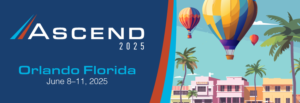HR teams have produced reports for decades and we’re very good at it. If there’s a problem with absenteeism or overdue performance reviews, it’ll show up on a report somewhere.
Now we have People Analytics, which sounds to many like a fancy name for reporting. There is a critical difference between reporting and analytics, but what is it?
Reports describe data and leave interpretation up to the reader.
Analytics diagnose issues and suggest remedies while also describing data.
Let’s look at the primary types of HR metrics –
- Descriptive: What happened?
- Diagnostic: Is it good or bad?
- Predictive: What will happen?
- Prescriptive: How do we improve what will happen?
Most HR reports contain descriptive metrics. They tell us what happened and help monitor the health of HR processes. Analytics, however, focus on performance indicators – actionable metrics where values can be interpreted as good or bad.
For instance, headcount is a descriptive metric. A headcount of 1000 is neither good nor bad…it just is.
Turnover rate is also a descriptive metric and it can be interpreted as good or bad (up is bad). By applying a benchmark or goal, turnover rate becomes a diagnostic metric, aka a key performance indicator (KPI). The metric now tells us if there’s a problem – “turnover is 20%, which is higher than goal”.
People Analytics are enhanced by machine learning and AI. Predictive analytics use statistical models to tell us what is likely to happen. This generates new strategic KPIs, such as employee exit risk. This lets us address problems before they happen – “turnover will increase by 10% in the next 6 months”. Prescriptive analytics build on the results of predictions and suggest solutions to future problems.
To sum up, People Analytics deliver actionable KPIs, forecasts and recommendations. We have the data needed for People Analytics but rarely analyze it beyond basic reporting. In general, we leave a lot of strategic insights locked up in our HR systems.










